Intel Celeron G4900 vs Intel Core i5-6200U
|
|
|
|
|
Intel Celeron G4900 vs Intel Core i5-6200U
Comparison of the technical characteristics between the processors, with the Intel Celeron G4900 on one side and the Intel Core i5-6200U on the other side. The first is dedicated to the desktop sector, It has 2 cores, 2 threads, a maximum frequency of 3,1GHz. The second is used on the laptop segment, it has a total of 2 cores, 4 threads, its turbo frequency is set to 2,8 GHz. The following table also compares the lithography, the number of transistors (if indicated), the amount of cache memory, the maximum RAM memory capacity, the type of memory accepted, the release date, the maximum number of PCIe lanes, the values obtained in Geekbench 4 and Cinebench R15.
Note: Commissions may be earned from the links above.
This page contains references to products from one or more of our advertisers. We may receive compensation when you click on links to those products. For an explanation of our advertising policy, please visit this page.
Specifications:
| Processor | Intel Celeron G4900 | Intel Core i5-6200U | ||||||
| Market (main) | Desktop | Laptop | ||||||
| ISA | x86-64 (64 bit) | x86-64 (64 bit) | ||||||
| Microarchitecture | Coffee Lake | Skylake | ||||||
| Core name | Coffee Lake-S | Skylake-U | ||||||
| Family | Celeron 4000 | Core i5-6000 | ||||||
| Part number(s), S-Spec | BX80684G4900, BXC80684G4900, CM8068403378112, QP9G, SR3W4 |
FJ8066201930409, SR2EY |
||||||
| Release date | Q2 2018 | Q3 2015 | ||||||
| Lithography | 14 nm | 14 nm | ||||||
| Transistors | — | 1.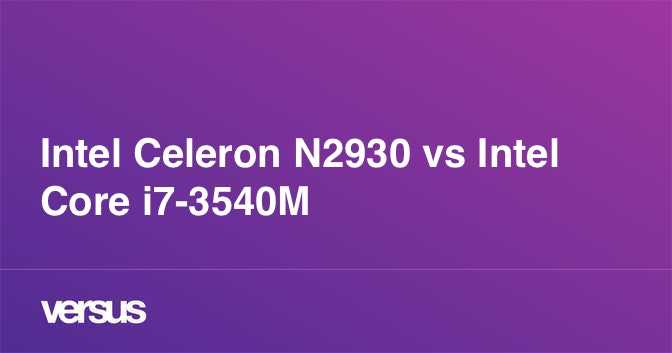 750.000.000 750.000.000 |
||||||
| Cores | 2 | 2 | ||||||
| Threads | 2 | 4 | ||||||
| Base frequency | 3,1 GHz | 2,3 GHz | ||||||
| Turbo frequency | — | 2,8 GHz | ||||||
| Bus speed | 8 GT/s | 4 GT/s | ||||||
| Cache memory | 2 MB | 3 MB | ||||||
| Max memory capacity | 64 GB | 32 GB | ||||||
| Memory types | DDR4-2400 | DDR4-2133, LPDDR3-1866, DDR3L-1600 |
||||||
| Max # of memory channels | 2 | 2 | ||||||
| Max memory bandwidth | 37,5 GB/s | 34,1 GB/s | ||||||
| Max PCIe lanes | 16 | 12 | ||||||
| TDP | 54 W | 15 W | ||||||
| Suggested PSU | 600W ATX Power Supply | — | ||||||
| GPU integrated graphics | Intel UHD Graphics 610 (Coffee Lake) | Intel HD Graphics 520 | ||||||
| GPU execution units | 12 | 24 | ||||||
| GPU shading units | 96 | 192 | ||||||
| GPU base clock | 350 MHz | 300 MHz | ||||||
| GPU boost clock | 1050 MHz | 1000 MHz | ||||||
| GPU FP32 floating point | 201,6 GFLOPS | 403,2 GFLOPS | ||||||
| Socket | LGA1151 | BGA1356 | ||||||
| Compatible motherboard | Socket LGA 1151 Motherboard | — | ||||||
| Maximum temperature | 100°C | 100°C | ||||||
| CPU-Z single thread | 351 | 279 | ||||||
| CPU-Z multi thread | 707 | 785 | ||||||
| Cinebench R15 single thread | 124 | 115 | ||||||
| Cinebench R15 multi-thread | 250 | 282 | ||||||
| Cinebench R20 single thread | 252 | 270 | ||||||
| Cinebench R20 multi-thread | 514 | 663 | ||||||
| PassMark single thread | 1.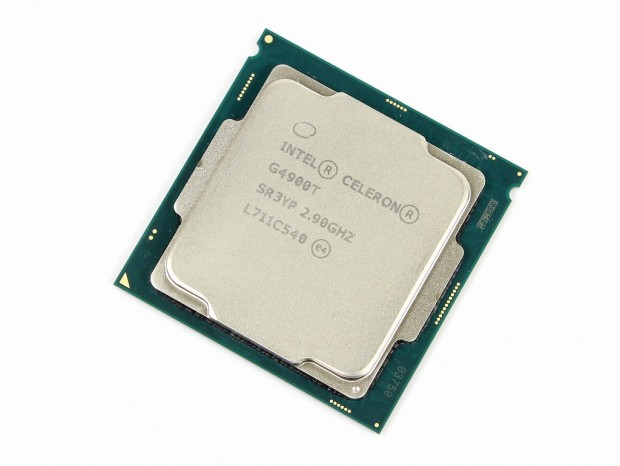 901 901 |
1.583 | ||||||
| PassMark CPU Mark | 2.409 | 3.014 | ||||||
| (Windows 64-bit) Geekbench 4 single core |
3.631 | 2.857 | ||||||
| (Windows 64-bit) Geekbench 4 multi-core |
6.085 | 5.570 | ||||||
| (SGEMM) GFLOPS performance |
42,6 GFLOPS | 93,5 GFLOPS | ||||||
| (Multi-core / watt performance) Performance / watt ratio |
113 pts / W | 371 pts / W | ||||||
| Amazon | ||||||||
| eBay |
Note: Commissions may be earned from the links above.
We can better compare what are the technical differences between the two processors.
Suggested PSU: We assume that we have An ATX computer case, a high end graphics card, 16GB RAM, a 512GB SSD, a 1TB HDD hard drive, a Blu-Ray drive. We will have to rely on a more powerful power supply if we want to have several graphics cards, several monitors, more memory, etc.
Price: For technical reasons, we cannot currently display a price less than 24 hours, or a real-time price. This is why we prefer for the moment not to show a price. You should refer to the respective online stores for the latest price, as well as availability.
We see that the two processors have an equivalent number of cores, the maximum frequency of Intel Celeron G4900 is greater, that the thermal dissipation power of Intel Core i5-6200U is less. The Intel Celeron G4900 was designed earlier.
Performances :
Performance comparison between the two processors, for this we consider the results generated on benchmark software such as Geekbench 4.
| CPU-Z — Multi-thread & single thread score | |
|---|---|
| Intel Core i5-6200U |
279 785 |
| Intel Celeron G4900 |
351 707 |
In single core, the difference is 26%. In multi-core, the difference in terms of gap is 11%.
Note: Commissions may be earned from the links above. These scores are only an
average of the performances got with these processors, you may get different results.
CPU-Z is a system information software that provides the name of the processor, its model number, the codename, the cache levels, the package, the process. It can also gives data about the mainboard, the memory. It makes real time measurement, with finally a benchmark for the single thread, as well as for the multi thread.
| Cinebench R15 — Multi-thread & single thread score | |
|---|---|
| Intel Core i5-6200U |
115 282 |
| Intel Celeron G4900 |
124 250 |
In single core, the difference is 8%.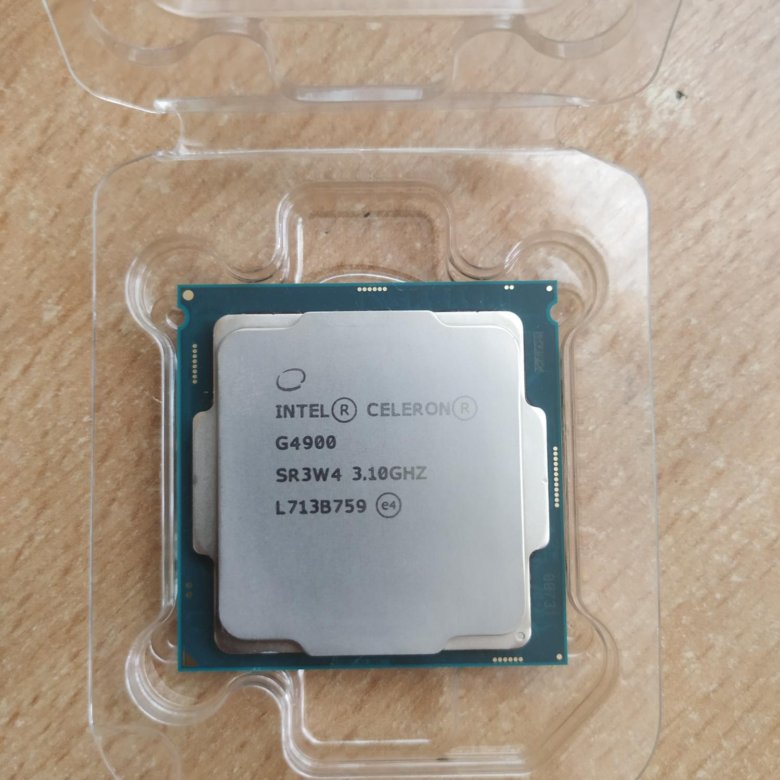 In multi-core, the difference in terms of gap is 13%.
In multi-core, the difference in terms of gap is 13%.
Note: Commissions may be earned from the links above. These scores are only an
average of the performances got with these processors, you may get different results.
Cinebench R15 evaluates the performance of CPU calculations by restoring a photorealistic 3D scene. The scene has 2,000 objects, 300,000 polygons, uses sharp and fuzzy reflections, bright areas, shadows, procedural shaders, antialiasing, and so on. The faster the rendering of the scene is created, the more powerful the PC is, with a high number of points.
| Cinebench R20 — Multi-thread & single thread score | |
|---|---|
| Intel Core i5-6200U |
270 663 |
| Intel Celeron G4900 |
252 514 |
In single core, the difference is 7%. In multi-core, the difference in terms of gap is 29%.
In multi-core, the difference in terms of gap is 29%.
Note: Commissions may be earned from the links above. These scores are only an
average of the performances got with these processors, you may get different results.
Cinebench R20 is a multi-platform test software which allows to evaluate the hardware capacities of a device such as a computer, a tablet, a server. This version of Cinebench takes into account recent developments in processors with multiple cores and the latest improvements in rendering techniques. The evaluation is ultimately even more relevant.
| PassMark — CPU Mark & single thread | |
|---|---|
| Intel Core i5-6200U |
1.583 3.014 |
| Intel Celeron G4900 |
1.901 2.409 |
In single core, the difference is 20%.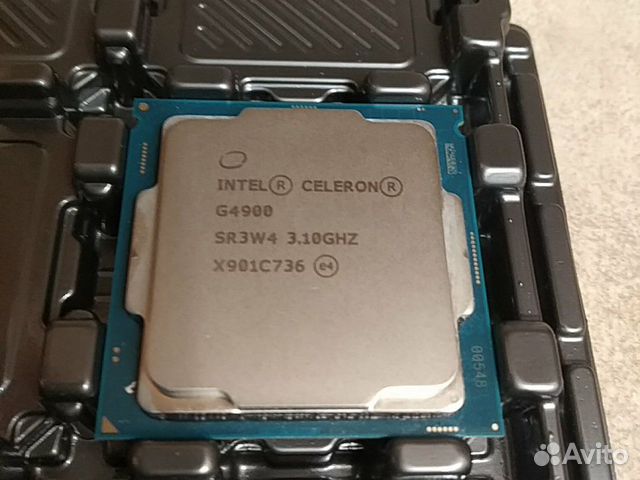 In multi-core, the difference in terms of gap is 25%.
In multi-core, the difference in terms of gap is 25%.
Note: Commissions may be earned from the links above. These scores are only an
average of the performances got with these processors, you may get different results.
PassMark is a benchmarking software that performs several performance tests including prime numbers, integers, floating point, compression, physics, extended instructions, encoding, sorting. The higher the score is, the higher is the device capacity.
On Windows 64-bit:
| Geekbench 4 — Multi-core & single core score — Windows 64-bit | |
|---|---|
| Intel Celeron G4900 |
3.631 6.085 |
| Intel Core i5-6200U |
2.857 5.570 |
In single core, the difference is 27%. In multi-core, the differential gap is 9%.
On Linux 64-bit:
| Geekbench 4 — Multi-core & single core score — Linux 64-bit | |
|---|---|
| Intel Core i5-6200U |
3.399 6.231 |
| Intel Celeron G4900 |
3.630 5.058 |
In single core, the difference is 7%. In multi-core, the difference in terms of gap is 23%.
On Mac OS X 64-bit:
| Geekbench 4 — Multi-core & single core score — Mac OS X 64-bit | |
|---|---|
| Intel Core i5-6200U |
3.048 5.949 |
| Intel Celeron G4900 |
3.193 5.124 |
In single core, the difference is 5%. In multi-core, the difference in terms of gap is 16%.
Note: Commissions may be earned from the links above.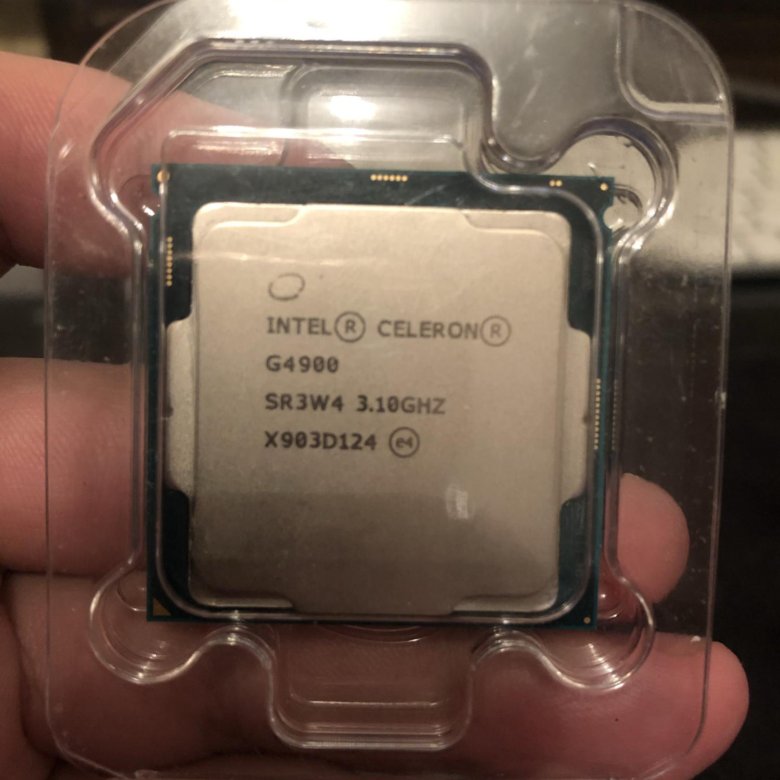 These scores are only an
These scores are only an
average of the performances got with these processors, you may get different results.
Geekbench 4 is a complete benchmark platform with several types of tests, including data compression, images, AES encryption, SQL encoding, HTML, PDF file rendering, matrix computation, Fast Fourier Transform, 3D object simulation, photo editing, memory testing. This allows us to better visualize the respective power of these devices. For each result, we took an average of 250 values on the famous benchmark software.
Equivalence:
Intel Celeron G4900 AMD equivalentIntel Core i5-6200U AMD equivalent
Intel Celeron G4900 vs Intel Core i3-6006U: What is the difference?
48points
Intel Celeron G4900
44points
Intel Core i3-6006U
Comparison winner
vs
63 facts in comparison
Intel Celeron G4900
Intel Core i3-6006U
Why is Intel Celeron G4900 better than Intel Core i3-6006U?
- 1.
 55x faster CPU speed?
55x faster CPU speed?
2 x 3.1GHzvs2 x 2GHz - 267MHz higher ram speed?
2400MHzvs2133MHz - 50MHz faster GPU clock speed?
350MHzvs300MHz - 6.35% higher PassMark result?
2413vs2269 - 3.4GB/s more memory bandwidth?
37.5GB/svs34.1GB/s - 1.66x higher PassMark result (single)?
1941vs1169 - 32GB larger maximum memory amount?
64GBvs32GB - Supports ECC memory?
Why is Intel Core i3-6006U better than Intel Celeron G4900?
- 2 more CPU threads?
4vs2 - 39W lower TDP?
15Wvs54W - 1MB bigger L3 cache?
3MBvs2MB - 0.5MB/core more L3 cache per core?
1.5MB/corevs1MB/core - Has AVX?
- Has F16C?
- Has FMA3?
Which are the most popular comparisons?
Intel Celeron G4900
vs
Intel Pentium G4600
Intel Core i3-6006U
vs
Intel Celeron N4020
Intel Celeron G4900
vs
Intel Celeron G4900T
Intel Core i3-6006U
vs
Intel Core i5-6200U
Intel Celeron G4900
vs
Intel Pentium G4560
Intel Core i3-6006U
vs
AMD A9-9425
Intel Celeron G4900
vs
Intel Core i5-9400F
Intel Core i3-6006U
vs
Intel Core i3-1115G4
Intel Celeron G4900
vs
Intel Core i5-7200U
Intel Core i3-6006U
vs
AMD A4-9125
Intel Celeron G4900
vs
Intel Celeron G4930
Intel Core i3-6006U
vs
Intel Core i5-4300M
Intel Celeron G4900
vs
Intel Core i3-8100T
Intel Core i3-6006U
vs
AMD Athlon Silver 3050U
Intel Celeron G4900
vs
AMD Athlon 200GE
Intel Core i3-6006U
vs
Intel Core i3-1005G1
Intel Celeron G4900
vs
Intel Celeron G3900TE
Intel Core i3-6006U
vs
AMD Ryzen 3 3250U
Intel Celeron G4900
vs
Intel Celeron G3900
Intel Core i3-6006U
vs
AMD A9-9420e
Price comparison
User reviews
Overall Rating
Intel Celeron G4900
0 User reviews
Intel Celeron G4900
0. 0/10
0/10
0 User reviews
Intel Core i3-6006U
1 User reviews
Intel Core i3-6006U
6.0/10
1 User reviews
Features
Value for money
No reviews yet
7.0/10
1 votes
Gaming
No reviews yet
6.0/10
1 votes
Performance
No reviews yet
7.0/10
1 votes
Reliability
No reviews yet
8.0/10
1 votes
Energy efficiency
No reviews yet
10.0/10
1 votes
Performance
1.CPU speed
2 x 3.1GHz
2 x 2GHz
The CPU speed indicates how many processing cycles per second can be executed by a CPU, considering all of its cores (processing units). It is calculated by adding the clock rates of each core or, in the case of multi-core processors employing different microarchitectures, of each group of cores.
2.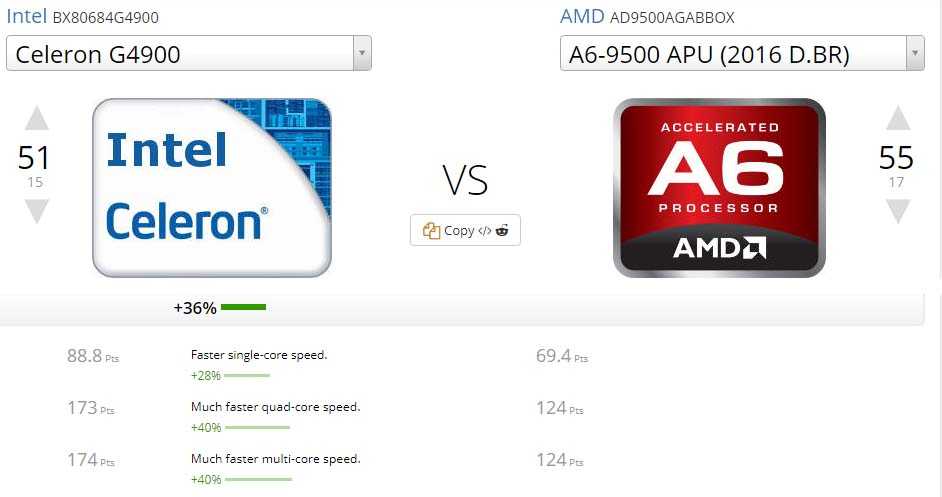 CPU threads
CPU threads
More threads result in faster performance and better multitasking.
3.turbo clock speed
Unknown. Help us by suggesting a value. (Intel Celeron G4900)
Unknown. Help us by suggesting a value. (Intel Core i3-6006U)
When the CPU is running below its limitations, it can boost to a higher clock speed in order to give increased performance.
4.Has an unlocked multiplier
✖Intel Celeron G4900
✖Intel Core i3-6006U
Some processors come with an unlocked multiplier which makes them easy to overclock, allowing you to gain increased performance in games and other apps.
5.L2 cache
A larger L2 cache results in faster CPU and system-wide performance.
6.L3 cache
A larger L3 cache results in faster CPU and system-wide performance.
7.L1 cache
A larger L1 cache results in faster CPU and system-wide performance.
8.L2 core
0.25MB/core
0.25MB/core
More data can be stored in the L2 cache for access by each core of the CPU.
9.L3 core
1MB/core
1.5MB/core
More data can be stored in the L3 cache for access by each core of the CPU.
Benchmarks
1.PassMark result
This benchmark measures the performance of the CPU using multiple threads.
2.PassMark result (single)
This benchmark measures the performance of the CPU using a single thread.
3.Geekbench 5 result (multi)
Unknown. Help us by suggesting a value. (Intel Celeron G4900)
Geekbench 5 is a cross-platform benchmark that measures a processor’s multi-core performance. (Source: Primate Labs, 2022)
4.Cinebench R20 (multi) result
Unknown. Help us by suggesting a value. (Intel Celeron G4900)
(Intel Celeron G4900)
Unknown. Help us by suggesting a value. (Intel Core i3-6006U)
Cinebench R20 is a benchmark tool that measures a CPU’s multi-core performance by rendering a 3D scene.
5.Cinebench R20 (single) result
Unknown. Help us by suggesting a value. (Intel Celeron G4900)
Unknown. Help us by suggesting a value. (Intel Core i3-6006U)
Cinebench R20 is a benchmark tool that measures a CPU’s single-core performance by rendering a 3D scene.
6.Geekbench 5 result (single)
Unknown. Help us by suggesting a value. (Intel Celeron G4900)
Geekbench 5 is a cross-platform benchmark that measures a processor’s single-core performance. (Source: Primate Labs, 2022)
7.Blender (bmw27) result
Unknown. Help us by suggesting a value. (Intel Celeron G4900)
Unknown. Help us by suggesting a value. (Intel Core i3-6006U)
The Blender (bmw27) benchmark measures the performance of a processor by rendering a 3D scene. More powerful processors can render the scene in less time.
More powerful processors can render the scene in less time.
8.Blender (classroom) result
Unknown. Help us by suggesting a value. (Intel Celeron G4900)
Unknown. Help us by suggesting a value. (Intel Core i3-6006U)
The Blender (classroom) benchmark measures the performance of a processor by rendering a 3D scene. More powerful processors can render the scene in less time.
9.performance per watt
Unknown. Help us by suggesting a value. (Intel Celeron G4900)
Unknown. Help us by suggesting a value. (Intel Core i3-6006U)
This means the CPU is more efficient, giving a greater amount of performance for each watt of power used.
Integrated graphics
1.GPU clock speed
350MHz
300MHz
The graphics processing unit (GPU) has a higher clock speed.
2.GPU turbo
1050MHz
900MHz
When the GPU is running below its limitations, it can boost to a higher clock speed in order to give increased performance.
3.GPU execution units
Unknown. Help us by suggesting a value. (Intel Celeron G4900)
Unknown. Help us by suggesting a value. (Intel Core i3-6006U)
A graphics processing unit (GPU) with a greater number of execution units can deliver better graphics.
4.supported displays
Using multiple displays you can create a larger workspace, making it easier to work across multiple apps.
5.DirectX version
DirectX is used in games, with newer versions supporting better graphics.
6.OpenGL version
OpenGL is used in games, with newer versions supporting better graphics.
7.OpenCL version
Unknown. Help us by suggesting a value. (Intel Celeron G4900)
Some apps use OpenCL to apply the power of the graphics processing unit (GPU) for non-graphical computing. Newer versions introduce more functionality and better performance.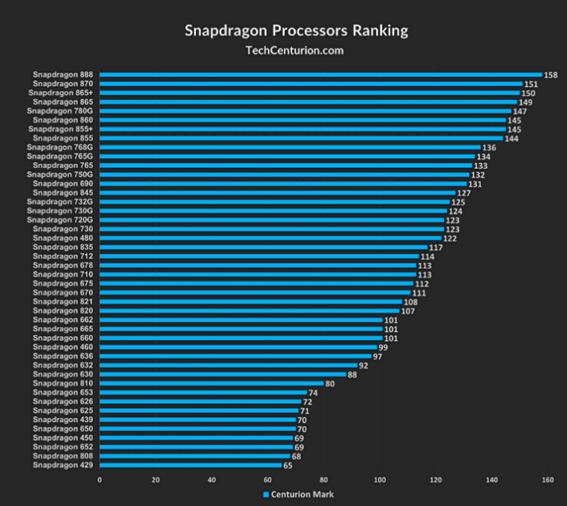
8.texture mapping units (TMUs)
Unknown. Help us by suggesting a value. (Intel Celeron G4900)
Unknown. Help us by suggesting a value. (Intel Core i3-6006U)
TMUs take textures and map them to the geometry of a 3D scene. More TMUs will typically mean that texture information is processed faster.
9.render output units (ROPs)
Unknown. Help us by suggesting a value. (Intel Celeron G4900)
Unknown. Help us by suggesting a value. (Intel Core i3-6006U)
The ROPs are responsible for some of the final steps of the rendering process, writing the final pixel data to memory and carrying out other tasks such as anti-aliasing to improve the look of graphics.
Memory
1.RAM speed
2400MHz
2133MHz
It can support faster memory, which will give quicker system performance.
2.maximum memory bandwidth
37. 5GB/s
5GB/s
34.1GB/s
This is the maximum rate that data can be read from or stored into memory.
3.DDR memory version
Unknown. Help us by suggesting a value. (Intel Celeron G4900)
DDR (Double Data Rate) memory is the most common type of RAM. Newer versions of DDR memory support higher maximum speeds and are more energy-efficient.
4.memory channels
More memory channels increases the speed of data transfer between the memory and the CPU.
5.maximum memory amount
The maximum amount of memory (RAM) supported.
6.bus transfer rate
The bus is responsible for transferring data between different components of a computer or device.
7.Supports ECC memory
✔Intel Celeron G4900
✖Intel Core i3-6006U
Error-correcting code memory can detect and correct data corruption. It is used when is it essential to avoid corruption, such as scientific computing or when running a server.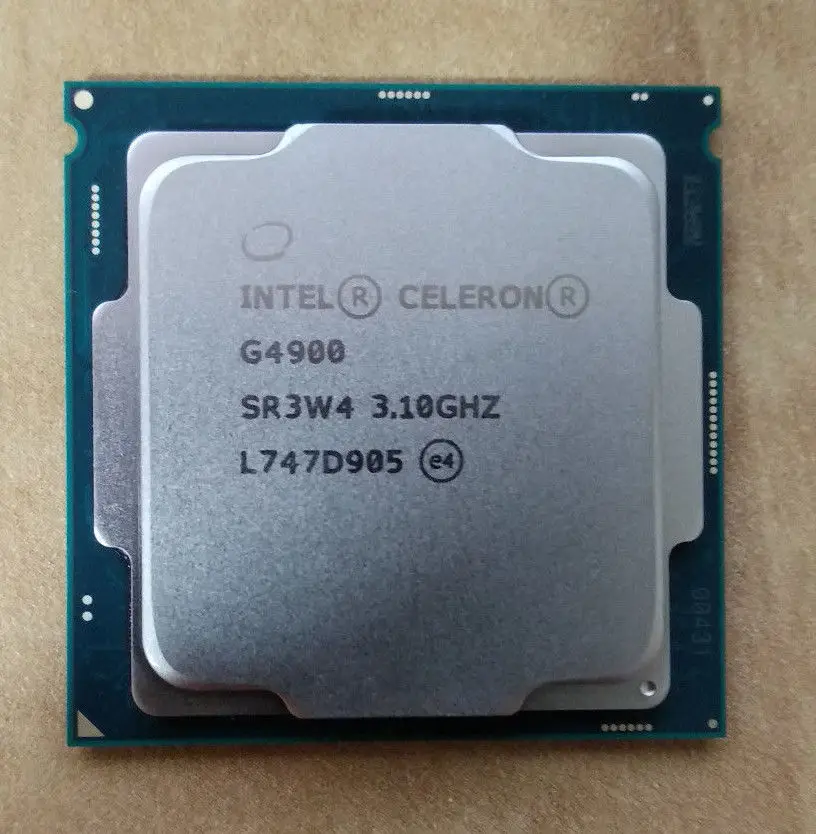
8.eMMC version
Unknown. Help us by suggesting a value. (Intel Celeron G4900)
Unknown. Help us by suggesting a value. (Intel Core i3-6006U)
A higher version of eMMC allows faster memory interfaces, having a positive effect on the performance of a device. For example, when transferring files from your computer to the internal storage over USB.
9.bus speed
Unknown. Help us by suggesting a value. (Intel Celeron G4900)
Unknown. Help us by suggesting a value. (Intel Core i3-6006U)
The bus is responsible for transferring data between different components of a computer or device.
Features
1.uses multithreading
✔Intel Celeron G4900
✔Intel Core i3-6006U
Multithreading technology (such as Intel’s Hyperthreading or AMD’s Simultaneous Multithreading) provides increased performance by splitting each of the processor’s physical cores into virtual cores, also known as threads. This way, each core can run two instruction streams at once.
This way, each core can run two instruction streams at once.
2.Has AES
✔Intel Celeron G4900
✔Intel Core i3-6006U
AES is used to speed up encryption and decryption.
3.Has AVX
✖Intel Celeron G4900
✔Intel Core i3-6006U
AVX is used to help speed up calculations in multimedia, scientific and financial apps, as well as improving Linux RAID software performance.
4.SSE version
SSE is used to speed up multimedia tasks such as editing an image or adjusting audio volume. Each new version contains new instructions and improvements.
5.Has F16C
✖Intel Celeron G4900
✔Intel Core i3-6006U
F16C is used to speed up tasks such as adjusting the contrast of an image or adjusting volume.
6.bits executed at a time
Unknown. Help us by suggesting a value. (Intel Celeron G4900)
Unknown. Help us by suggesting a value. (Intel Core i3-6006U)
Help us by suggesting a value. (Intel Core i3-6006U)
NEON provides acceleration for media processing, such as listening to MP3s.
7.Has MMX
✔Intel Celeron G4900
✔Intel Core i3-6006U
MMX is used to speed up tasks such as adjusting the contrast of an image or adjusting volume.
8.Has TrustZone
✖Intel Celeron G4900
✖Intel Core i3-6006U
A technology integrated into the processor to secure the device for use with features such as mobile payments and streaming video using digital rights management (DRM).
9.front-end width
Unknown. Help us by suggesting a value. (Intel Celeron G4900)
Unknown. Help us by suggesting a value. (Intel Core i3-6006U)
The CPU can decode more instructions per clock (IPC), meaning that the CPU performs better
Price comparison
Cancel
Which are the best CPUs?
Intel Pentium Gold G5600 or Intel Core i5-6300U
- Home
- >
- Processors
- >
- Intel Pentium Gild G5600
Pentium Gold G5500
Compare
Compare
Compare
Family
- Core i5-63002HQ Compare
- HQ0004
- Core i5-6260u
Compare - Core i5-6200u
Compare
Speed in games
Pentium Gold G5600
53.2 (+35%) CORE I5-6300U 900U 900U 900U 900U 900U 900U 900U 900U 900U 900U 900U 900U 900U 900U 900U 900U 900U 900U 900U 900U 900U 900U 900U 900U 900U 900U 900U 900U 900U 900U 900U 900U similar applications, according to our tests.

The performance of 4 cores, if any, and performance per core has the greatest impact on the result, since most games do not fully use more than 4 cores.
The speed of caches and working with RAM is also important.
Speed in office use
Pentium Gold G5600
59.3 (+36%)
Core i5-6300U
43.5
Performance in everyday work such as browsers and office programs.
The performance of 1 core has the greatest impact on the result, since most of these applications use only one, ignoring the rest.
Similarly, many professional applications such as various CADs ignore multi-threaded performance.
Speed in heavy applications
Pentium Gold G5600
29.5 (+37%)
Core i5-6300U
21.6
Performance in resource-intensive tasks loading up to 8 cores.
The performance of all cores and their number have the greatest impact on the result, since most of these applications willingly use all the cores and increase the speed accordingly.

At the same time, certain periods of work can be demanding on the performance of one or two cores, for example, applying filters in the editor.
Data obtained from tests by users who tested their systems with and without overclocking. Thus, you see the average values corresponding to the processor.
Speed of numerical operations
Simple household tasks
Pentium Gold G5600
58.1 (+42%)
Core i5-6300U
40.9
Demanding games and tasks
Pentium Gold G5600
25.7 (+55%)
Core i5-6300U
16.6
Extreme
Pentium Gold G5600
5.
 6 (+51%)
6 (+51%) Core i5-6300U
3.7
Different tasks require different CPU strengths. A system with few fast cores and low memory latency will be fine for the vast majority of games, but will be inferior to a system with a lot of slow cores in a rendering scenario.
We believe that a minimum of 4/4 (4 physical cores and 4 threads) processor is suitable for a budget gaming PC. At the same time, some games can load it at 100%, slow down and freeze, and performing any tasks in the background will lead to a drop in FPS.
The budget shopper should ideally aim for a minimum of 4/8 and 6/6. A gamer with a big budget can choose between 6/12, 8/8 and 8/16. Processors with 10 and 12 cores can perform well in games with high frequency and fast memory, but are overkill for such tasks. Also, buying for the future is a dubious undertaking, since in a few years many slow cores may not provide sufficient gaming performance.

When choosing a processor for your work, consider how many cores your programs use. For example, photo and video editors can use 1-2 cores when working with filtering, and rendering or converting in the same editors already uses all threads.
Data obtained from tests by users who tested their systems both with overclocking (maximum value in the table) and without (minimum). A typical result is shown in the middle, the more filled in the color bar, the better the average result among all tested systems.
Benchmarks
Benchmarks were run on stock hardware, that is, without overclocking and with factory settings. Therefore, on overclocked systems, the points can noticeably differ upwards. Also, small performance changes may be due to the BIOS version.
Geekbench 3 Single Core
Intel Pentium Gold G5600
3994 (+26%)
Intel Core i5-6300U
3158
Geekbench 3 Multi Core
Intel Pentium Gold G5600
8467 (+42%)
Intel Core i5-6300U
5973
Cinebench R11.
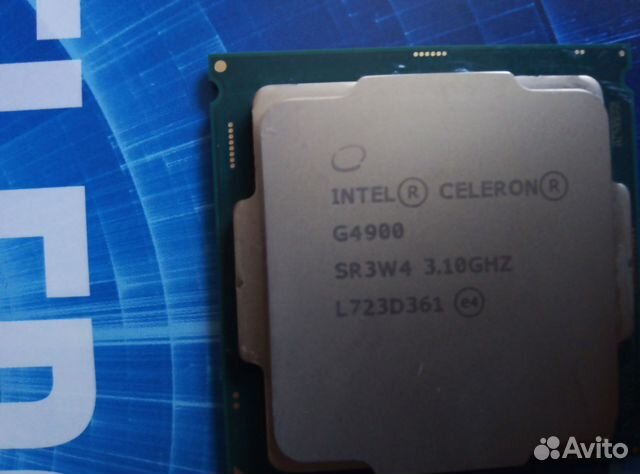 5
5
Intel Pentium Gold G5600
2.05 (+42%)
Intel Core i5-6300U
1.44
Cinebench R11.5
Intel Pentium Gold G5600
5.15 (+67%)
Intel Core i5-6300U
3.09
Cinebench R11.5 iGPU, OpenGL
Intel Pentium Gold G5600
26.7
Intel Core i5-6300U
29.2 (+9% )
Passmark
Intel Pentium Gold G5600
3709 (+14%)
Intel Core i5-6300U
3249
The main
9 Note that a socket is not guaranteed to be compatible. The manufacturer may not add support to the BIOS.
Intel Socket 1151 BGA 1356 Manufacturer Firm Intel Intel Code name of the Microarchitecture family. Coffee Lake Skylake Capacity
Cores The total number of physical cores. 
2 2 Threads The number of threads. The number of logical processor cores that the operating system sees. 4 4 Multi-Threading Technology With Intel’s Hyper-threading and AMD’s SMT technology, one physical core is recognized as two logical cores in the operating system, thereby increasing processor performance in multi-threaded applications. Hyper-threading (note that some games may not work well with Hyper-threading, for maximum FPS you can try disabling the technology in the BIOS of the motherboard). Hyper-threading (note that some games may not work well with Hyper-threading, for maximum FPS you can try disabling the technology in the BIOS of the motherboard). Base frequencyThe guaranteed frequency of all cores (P-cores in the case of the corresponding architecture) of the processor at maximum load.  It is important to remember that speed and frequency are not directly related. For example, a new processor at a lower frequency may be faster than an old one at a higher one.
It is important to remember that speed and frequency are not directly related. For example, a new processor at a lower frequency may be faster than an old one at a higher one. 3.9 GHz 2.4 GHz TDPThermal Design Power is an indicator that determines the heat dissipation in standard operation. The cooler or water cooling system must be rated for a larger value. Remember that with a factory bus or manual overclocking, TDP increases significantly. 51W 15W Cache and RAM
Maximum RAM Amount of RAM that can be installed on the motherboard with this processor. 64 GB 32 GB Supported type of RAM The type of RAM determines its frequency and timings (speed), availability, price. 
DDR4-2666 MHz
Dual-channelDDR4-2133, LPDDR3-1866, DDR3L-1600 RAM Channels The multi-channel memory architecture increases data transfer speed. On desktop platforms, two-channel, three-channel and four-channel modes are available. 2 2 RAM bandwidth 37.5 GB/s 34.1 GB/s Video core
Integrated graphics core Allows you to use your computer without a discrete graphics card. The monitor is connected to the video output on the motherboard. If earlier integrated graphics made it possible to simply work at a computer, today it can replace budget video accelerators and makes it possible to play most games at low settings. UHD Graphics 630 Intel® HD Graphics 520 GPU base clockFrequency of 2D and idle operation. 
350 MHz 300 MHz Maximum GPU frequencyMaximum 3D frequency. 1100 MHz 1000MHz Supported monitorsThe maximum number of monitors that can be connected to the integrated video core at the same time. 3 3 PCI
PCI-E PCI Express computer bus version. The bandwidth and power limit depend on the version. There is backward compatibility. Gen 3, 16 Lanes
(CPU only)1×4, 2×2, 1×2+2×1 and 4×1 Details
Model Official name. G5600 i5-6300U ArchitectureCode name for the microarchitecture generation. 
Coffee Lake Skylake Process The manufacturing process, measured in nanometers. The smaller the technical process, the more perfect the technology, the lower the heat dissipation and power consumption. For Ryzen with a chiplet layout, the CCD process is implied. 14 nm 14 nm DescriptionInformation about the processor, taken from the official website of the manufacturer. Intel® Pentium® Gold G5600 Processor (4M Cache, 3.90 GHz) Intel® Core™ i5-6300U Processor (3M Cache, up to 3.00 GHz) Instructions 64-bit 64-bit Extended instruction set Allows you to speed up calculations, processing and execution of certain operations.  Also, some games require instruction support.
Also, some games require instruction support. Intel® SSE4.1, Intel® SSE4.2 SSE4.1/4.2, AVX 2.0 Which is better
Intel Pentium Gold G5600
- On average, gaming performance is 35% better.
- The speed of work in office applications and browsers is increased by 55%.
- In complex multi-threaded applications, faster and outperforms by 51%.
- The base frequency is 1.5 GHz higher.
Intel Core i5-6300U
- TDP is 71% lower
How are they similar
- The number of physical cores is the same.
- The number of threads is equal.
Intel Core i3-6006U vs Intel Pentium G4560: What is the difference?
smartphonesgraphic cardswireless headphones CPU
44points
Intel Core i3-6006U
46points
Intel Pentium G4560
Comparison winner
vs
0047
63 facts in comparison
Intel Core i3-6006U
Intel Pentium G4560
Why is Intel Core i3-6006U better than Intel Pentium G4560?
- 39W below TDP?
15W vs 54W - Has AVX?
- Has F16C?
- Has FMA3?
Why is Intel Pentium G4560 better than Intel Core i3-6006U?
- 1.
 75x higher CPU speed?
75x higher CPU speed?
2 x 3.5GHz vs 2 x 2GHz - 267MHz higher RAM speed?
2400MHz vs 2133MHz - GPU frequency 50MHz higher?
350MHz vs 300MHz - 1.56x higher PassMark score?
3531 vs 2269 - 4.3GB/s more memory bandwidth?
38.4GB/s vs 34.1GB/s - 1.82x higher PassMark score (single)?
2123 vs 1169 - 32GB more max memory?
64GB vs 32GB - 150MHz faster GPU turbo speed?
1050MHz vs 900MHz
Which comparisons are the most popular?
Intel Core i3-6006u
VS
Intel Celeron N4020
Intel Pentium G4560
VS
Intel Core
Intel Core
Intel Core
Intel Core0047
Intel Core i5-6200U
Intel Pentium G4560
vs
Intel Core i5-7400
Intel Core i3-6006U
vs
AMD A9-9425
Intel Pentium G4560
vs
Intel Core i3-7100
Intel Core i3-6006U
vs
Intel Core i3-1115G4
Intel Pentium G4560
vs
Intel Core i3-6100
Intel Core i3-6006U
vs
AMD A4- 9125
Intel Pentium G4560
vs
Intel Celeron N3350
Intel Core i3-6006U
vs
Intel Core i5-4300M
Intel Pentium G4560
vs
Intel Core i5-3470
Intel Core i3-6006U
vs
AMD Athlon Silver 3050U
Intel Pentium G4560
vs
AMD Ryzen 3 1200
Intel Core i3-6006U
vs
Intel Core i3-1005G1
Intel Pentium G4560
vs
Intel Core i5-4570
Intel Core i3-6006U
vs
AMD Ryzen 3 3250U
Intel Pentium G4560
vs
Intel Core i5-6500
Intel Core i3 -6006u
VS
AMD A9-9420E
Intel Pentium G4560
VS
AMD A8-7600
Comparison of users
0047
3 votes
Performance
1.
 CPU speed
CPU speed 2 x 2GHz
2 x 3.5GHz
CPU speed indicates how many processing cycles per second a processor can perform, considering all its cores (processors). It is calculated by adding the clock speeds of each core or, in the case of multi-core processors, each group of cores.
2.processor thread of execution
More threads result in better performance and better multitasking.
3. turbo clock speed
Unknown. Help us offer a price. (Intel Core i3-6006U)
Unknown. Help us offer a price. (Intel Pentium G4560)
When the processor is running below its limits, it can jump to a higher clock speed to increase performance.
4. Unlocked
✖Intel Core i3-6006U
✖Intel Pentium G4560
Some processors come with an unlocked multiplier and are easier to overclock, allowing for better performance in games and other applications.

5.L2 cache
More L2 scratchpad memory results in faster results in CPU and system performance tuning.
6.L3 cache
More L3 scratchpad memory results in faster results in CPU and system performance tuning.
7.L1 cache
More L1 cache results in faster results in CPU and system performance tuning.
8.core L2
0.25MB/core
0.25MB/core
More data can be stored in the L2 scratchpad for access by each processor core.
9.core L3
1.5MB/core
1.5MB/core
More data can be stored in L3 scratchpad memory to access each processor core.
Geotagging
1. PassMark result
This test measures CPU performance using multi-threading.
2. PassMark result (single)
This test measures processor performance using a thread of execution.
3.Geekbench 5 result (multi-core)
Unknown. Help us offer a price. (Intel Pentium G4560)
Geekbench 5 is a cross-platform benchmark that measures multi-core processor performance. (Source: Primate Labs, 2022)
4. Cinebench R20 result (multi-core)
Unknown. Help us offer a price. (Intel Core i3-6006U)
Unknown. Help us offer a price. (Intel Pentium G4560)
Cinebench R20 is a benchmark that measures the performance of a multi-core processor by rendering a 3D scene.
5.Cinebench R20 result (single core)
Unknown. Help us offer a price. (Intel Core i3-6006U)
Unknown. Help us offer a price. (Intel Pentium G4560)
Cinebench R20 is a test to evaluate the performance of a single core processor when rendering a 3D scene.
6.Geekbench 5 result (single core)
Unknown. Help us offer a price.
 (Intel Pentium G4560)
(Intel Pentium G4560) Geekbench 5 is a cross-platform benchmark that measures the single-core performance of a processor. (Source: Primate Labs, 2022)
7. Blender test result (bmw27)
Unknown. Help us offer a price. (Intel Core i3-6006U)
Unknown. Help us offer a price. (Intel Pentium G4560)
Benchmark Blender (bmw27) measures CPU performance by rendering a 3D scene. More powerful processors can render a scene in a shorter time.
8.Blender result (classroom)
Unknown. Help us offer a price. (Intel Core i3-6006U)
Unknown. Help us offer a price. (Intel Pentium G4560)
The Blender (classroom) benchmark measures CPU performance by rendering a 3D scene. More powerful processors can render a scene in a shorter time.
9.performance per watt
Unknown. Help us offer a price. (Intel Core i3-6006U)
Unknown. Help us offer a price.
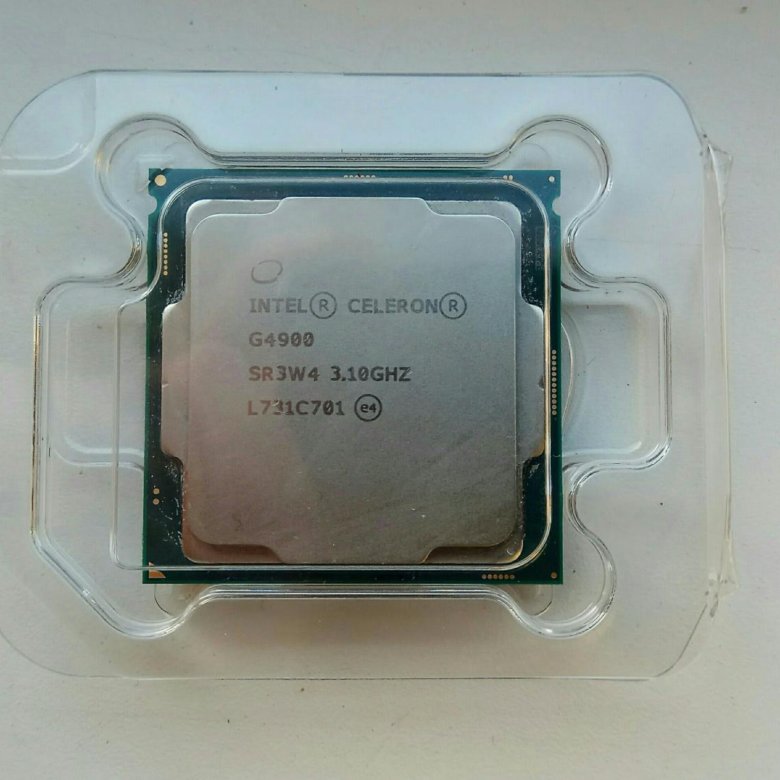 (Intel Pentium G4560)
(Intel Pentium G4560) This means that the processor is more efficient, giving more performance per watt of power used.
Integrated graphics
1.GPU clock speed
300MHz
350MHz
The graphics processing unit (GPU) has a higher clock speed.
2.turbo GPU
900MHz
1050MHz
When the GPU is running below its limits, it can jump to a higher clock speed to increase performance.
3.GPU actuators
Unknown. Help us offer a price. (Intel Core i3-6006U)
A graphics processing unit (GPU) with more execution units can provide better graphics.
4.support 9 monitors0047
By using multiple displays, you can increase your workspace, making it easier to work across multiple applications.
DirectX version 5.
DirectX is used in games with a new version that supports better graphics.

6.version of OpenGL
The newer version of OpenGL, the better graphics quality in games.
OpenCL 7.version
Some applications use OpenCL to use the graphics processing unit (GPU) for non-graphical computing. Newer versions are more functional and better quality.
8. textured units (TMUs)
Unknown. Help us offer a price. (Intel Core i3-6006U)
Unknown. Help us offer a price. (Intel Pentium G4560)
TMUs take texture units and map them to the geometric layout of the 3D scene. More TMUs generally means texture information is processed faster.
9 ROPs imaging units
Unknown. Help us offer a price. (Intel Core i3-6006U)
Unknown. Help us offer a price. (Intel Pentium G4560)
ROPs are responsible for some of the final steps of the rendering process, such as writing the final pixel data to memory and for performing other tasks such as anti-aliasing to improve the appearance of graphics.

Memory
1.RAM speed
2133MHz
2400MHz
Can support faster memory which speeds up system performance.
2.max memory bandwidth
34.1GB/s
38.4GB/s
This is the maximum rate at which data can be read from or stored in memory.
3rd DDR memory version
Unknown. Help us offer a price. (Intel Pentium G4560)
DDR (Double Data Rate Synchronous Dynamic Random Access Memory) is the most common type of main memory. New versions of DDR memory support higher maximum speeds and are more energy efficient.
4.memory channels
More memory channels increase the speed of data transfer between memory and processor.
5.maximum memory
Maximum memory (RAM).
6.bus baud rate
The bus is responsible for transferring data between different components of a computer or device.
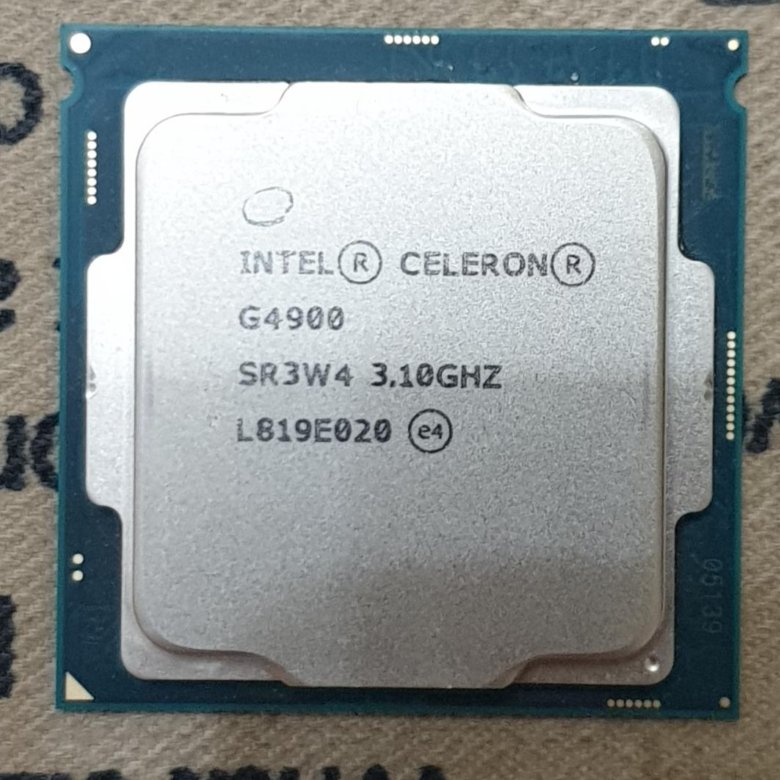
7. Supports memory troubleshooting code
✖Intel Core i3-6006U
✖Intel Pentium G4560
Memory error recovery code can detect and correct data corruption. It is used when necessary to avoid distortion, such as in scientific computing or when starting a server.
8.eMMC version
Unknown. Help us offer a price. (Intel Core i3-6006U)
Unknown. Help us offer a price. (Intel Pentium G4560)
A newer version of eMMC — built-in flash memory card — speeds up the memory interface, has a positive effect on device performance, for example, when transferring files from a computer to internal memory via USB.
9.bus frequency
Unknown. Help us offer a price. (Intel Core i3-6006U)
Unknown. Help us offer a price. (Intel Pentium G4560)
The bus is responsible for transmitting data between different components of the computer or device
Functions
1.
 It is used by multi-plate
It is used by multi-plate ✔Intel Pentium G4560
. from Intel or Simultaneous Multithreading from AMD) delivers faster performance by dividing each physical processor core into logical cores, also known as threads. Thus, each core can run two instruction streams at the same time.
2. Has AES
✔Intel Core i3-6006U
✔Intel Pentium G4560
AES is used to speed up encryption and decryption.
3. Has AVX
✔Intel Core i3-6006U
✖Intel Pentium G4560
AVX is used to help speed up calculations in multimedia, scientific and financial applications, and to improve the performance of the Linux RAID program.
4.Version SSE
SSE is used to speed up multimedia tasks such as editing images or adjusting audio volume. Each new version contains new instructions and improvements.
5. Has F16C
✔Intel Core i3-6006U
✖Intel Pentium G4560
F16C is used to speed up tasks such as adjusting image contrast or adjusting volume.

- Core i5-6260u
